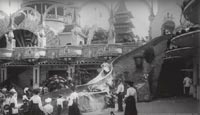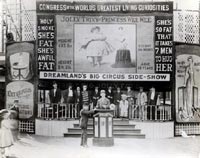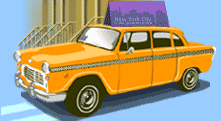 |
|
 |
 |
 |
 |
 |
 |
 |
 |
 |
| Water slide at Luna Park, Coney Island, 1905 |
 |
Agnes M., an immigrant servant girl, loved Coney Island. When a friend from Germany arrived, Agnes took her there first.
Agnes recalled, "when we had been on the razzle-dazzle, the chute and the loop-the-loop . . . and everywhere else, I asked her how she liked it."
"Ach," her friend answered, "it is just like what I see when I dream of heaven."
For New York's working women and men, Coney Island was a dream come true: a place to escape city heat, parents, and work -- a place to have fun. Located on a strip of sand between Brooklyn and the Atlantic Ocean, Coney Island featured rides, exotic-looking buildings (one was shaped like an elephant), cheap seafood, the beach, and, after dark, a magical world of electric lights and noisy dance halls. Men and women of different ethnic groups mingled freely.
It didn't start out that way, however. Coney Island first became popular after the Civil War as a quiet get-away for rich New Yorkers. By the 1890s, however, mass transit made it cheap and easy to get there. It soon hosted saloons, gambling dens, and a bad reputation.
 |
 |
| A circus side show at Dreamland Park, Coney Island, 1908 |
 |
It didn't start out that way, however. Coney Island first became popular after the Civil War as a quiet get-away for rich New Yorkers. By the 1890s, however, mass transit made it cheap and easy to get there. It soon hosted saloons, gambling dens, and a bad reputation.
For the next fifty years, they entertained millions with new mass amusements: the Cyclone rollercoaster, the Trip to the Moon ride, and the Fighting Flames show, in which firemen "rescued" women and children from burning "buildings." But, by the 1950s, the automobile and airplane were taking New Yorkers to other vacation spots, and Coney Island went into decline. Today, Coney Island is an amusement park that looks slightly past its prime.
 Top illustration: Courtesy of the Collection of the New-York Historical Society.
Top illustration: Courtesy of the Collection of the New-York Historical Society.
Illustration at bottom: Courtesy of the Museum of the City of New York.
|
 |
 |
 |
 |
 |
 |
 |
 |
 |
|
 |
 |








